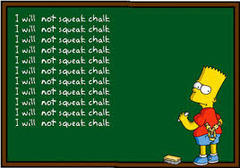Learning styles are classifications that are used to identify the different ways in which people learn. Learning takes place through our individual perceptions of reality and the way in which were process information and experiences. Some individuals feel their way through new information or situations, while others think their way through. Therefore, perceptions of reality tend to be either more emotionally centered or more analytically based. When processing new information or experiences, some people watch and absorb while others act and do.
When the two different ways of percieving are combined with the two different ways of processing, four distinct learning styles emerge.(1). Interactive Learner (2). Reader/Listener Learner(3).
Systematic Learner (4).Intuitive Learner
To enhance your short-term memory, try categorizing the information into smaller segments.For example: The skin consists of three divisions. (1). Epidermis (2). Dermis (3).
Adipose TissueContained within these divisions are eight layers of skin structures. Rather than trying to remember all eight layers, use the three categories of the skin divisions to break the information down into three sections.Five of the eight layers start with the word stratum, which are found in the epidermis.(1). Corneum (2).
Lucidum (3). Granulosum (4). Spinosum (5). Germinativum To promote better long-term memory, try to associate new information with prior knowledge through word association techniques.For example, based on what you know about the epidermis, we will use word association techniques to remember the names and characteristics of one of the five layers:Outermost layer: stratum corneum-aka. horny layer; continually being shed; corn rhymes with horn.

(3). Maintain a routine by studying in the same place whenever possible.
(2). Resist distractions during study time.(3). Be persistent, disciplined, and determined.
(4). Think about tackling the tougher chapters or topics first.(5). Pace yourself with breaks, healthy snacks, and physical movement.
